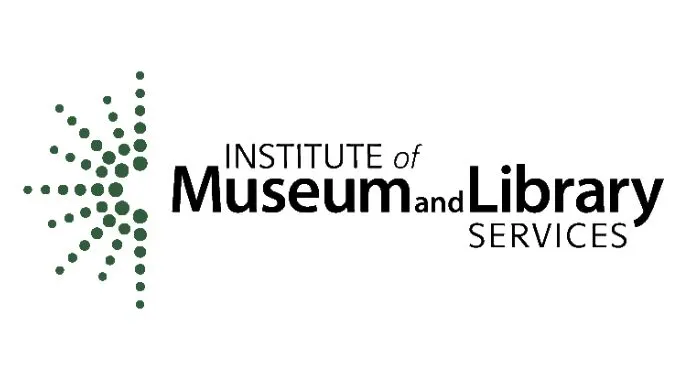I apologise for being absent from the site, and if this post is not of interest to every reader of my blog, but since I have now reached a strong intermediate stage in my Japanese-learning journey (yes, after years of study), I thought I would share some traditional learning resources which I found useful in my beginner stage of learning Japanese. I know that language immersion and listening to podcasts, Japanese YouTube, etc. is popular nowadays and very important, but here I will talk about some books that I personally found useful in my language-learning journey, and which I believe don’t get enough attention or promotion on the Internet.

First, I believe that the very best introductory textbook on the market for a Japanese learner is Minna no Nihongo (Books 1 and 2). This is the most thorough, the most detailed textbook for a beginner you can get. It may appear daunting at first since the textbook is in Japanese, but there is separate book you can buy that would explain the grammar in your native language and also translate everything in the text. What makes it so great is that it presents the material in the most logical and progressive manner with no big jumps or chaotic presentation of topics. This is very important for learning Japanese in particular – that there is logical, step-by-step progression in the presentation of grammar. Minna no Nihongo is also more detailed and provides much more words and grammar explanations than the Genki I and II textbooks, its main competitor. Moreover, the Minna no Ningono textbook has separate booklets available to practise each core skill – listening, kanji, writing, grammar and reading. For kanji (a hieroglyphical system that is part of the Japanese writing system), I also highly recommend the Kanji Look and Learn book, together with its workbook.
Other hidden gems and resources that not enough people talk about:
Reading & Grammar




Understanding Japanese Particles from Their Image – If you have ever been lost in the sea of Japanese particles and their usage, then this is a book for you. It explains very clearly each particle with illustrations, so you never mix them up again. Some participles’ usage may appear counter-intuitive for English-speakers, so this is a great resource to make them stick in your mind. Japanese Folktales is also a good, beginner-friendly book of Japanese folktales that provides stories in Japanese with corresponding English texts and vocabulary lists. You will find here such stories as Kintaro, The Golden Boy, The Haunted Canal, and The Tale of Princess Kaguya, and it has free online audio support. One book that I have never seen recommended anywhere is also 10 Minutes Daily Reading Comprehension, a collection of 120 short reading passages in Japanese that start from the very basic, pre-N5 level, and progress in difficulty, with the 120th passage being upper-beginner N4 level. This is a gem that gets you reading Japanese incrementally and without much pressure, and the great thing is that the book contains not only articles and diary entries, but also graphs, charts, SMS messages, e-mails and notices so you become comfortable reading anything. It also has a few listening exercises and each text is supported by an audio format. 国語 (kogoku), native language teaching books for Japanese primary school children published by mitsumura-tosho is another great option to start and continue reading in Japanese. Since the books are designed for children, the texts are easy and fun to read, and the kanji are very simple. It may be difficult to locate them, but Internet offers some options. They are worth going that extra mile for because their learning-to-read approach is effective.
Listening & Speaking




These Nihongo o Hanasoo! (Let’s Speak Japanese!) shadowing books I cannot recommend highly enough. They start from the beginner level, and contain sections of Japanese phrases and then conversations, which you repeat while listening to the audio. Apart from YouTube and general immersion, it is one single book that helped me to advance my speaking abilities and polish my Japanese pronunciation. The Mainichi no Kikitori – 50 Days helps with listening comprehension. Those who prefer more traditional, class-room based methods to help with their listening, will find these 50 chapters – one a day – a delight. The exercises vary and are never boring, and most passages are interesting. Each day focuses on a different grammar structure, and this series starts from the absolute beginner level as well. Finally, The Giongo Gitaigo is a fun book that introduces the reader to Japanese expressions and phrases used in daily conversations. The book focuses mainly on Japanese onomatopoeia (basically, words that represent sounds), and contains rather amusing pictures to go with all the phrases and examples.
JLPT-focused books




The day before yesterday (6th July) I sat the JLPT N4 test in London. JLPT is the Japanese Language Proficiency Test, an internationally recognised qualification for non-native speakers, and it ranges from the N5 level (the easiest) all the way to the N1 level (the hardest, near-native). Even though I now consider myself a strong N3 level candidate, I still sat the N4 test and enjoyed the experience (the results will be available late August). I also previously took the JLPT N5 test in London and gained full marks on it. So, with this background info aside, I thought I would recommend some JLPT-specific resources for those interested in more test-related books. Shin Kanzen Master and Nihongo Sō-Matome series of books are the most popular books for one’s JLPT practice that focus on each particular skill, but since they are very well-known, I thought I would focus on others.
The JLPT Best Vocabulary Builder is a great series of books for each JLPT level that focuses on improving one’s vocabulary. It presents each word in a sentence (context) for you to better remember it, and there is audio that you can download to listen to each word and its usage in the context. An invaluable book. The Speed Master series of books for each JLPT level trains separate skills to prepare you for each section of the exam: grammar, vocabulary, reading and listening. What is great about them is that they go straight to the point and prepare you for the test through numerous exercises and complete practice tests (the reading book contains numerous both short and medium-length reading exercises for JLPT N4, for example). Practice makes perfect. Bunpō (Grammar) Training book was a real find for me during my preparation for N4. It presents each grammar point through the audio, and there are numerous example sentences to become familiar as to how this or that grammar point is used in context. Finally, The Preparatory Course for JLPT – Yomu is a useful, albeit slightly misleading book. Though the cover says “yomu” (reading), the book is largely useful for grammar as it contains sections and practice questions on particles, adverbs and grammar in general. Towards the very end, it also has useful tips and exercises on how to better one’s reading in Japanese.
The Japanese Test For You website is a great resource for learning Japanese and for JLPT-focused questions, with hundreds of listening, grammar, reading and vocab exercises for each JLPT level, and they also provide hundreds of infographic flashcards for you to remember vocabulary, phrases and kanji. I also think that the other important thing for learning the language is to start reading in Japanese as soon as possible, without fearing unknown kanji, words or grammar. By choosing adapted texts for your level, you can start reading straightaway, and for this great tip I am also thankful to the Bunsuke YouTube channel, run by insightful academic with almost two decades worth of Japanese reading and learning experience. What is unique about reading in Japanese is that it trains the core Japanese skills at the same time: kanji, vocabulary and grammar. There is simply no replacement for reading, and the sooner you start – the better. Don’t worry if you don’t understand everything – your brain adapts in time, and still stores information.
I am now finally finishing Harry Potter and the Philosopher’s Stone in Japanese titled ハリー・ポッターと賢者の石, which is around N3 level, and am enjoying the experience very much. For those interested, I may do an update on that, and for those interested in learning Japanese or continuing doing so, I can say – 頑張って (ganbatte)! 🇯🇵💪



















 English (US) ·
English (US) ·